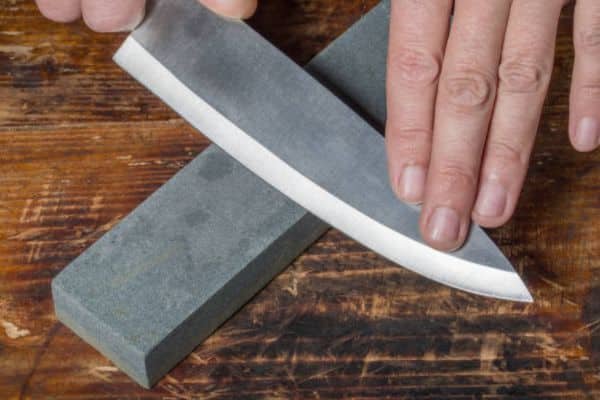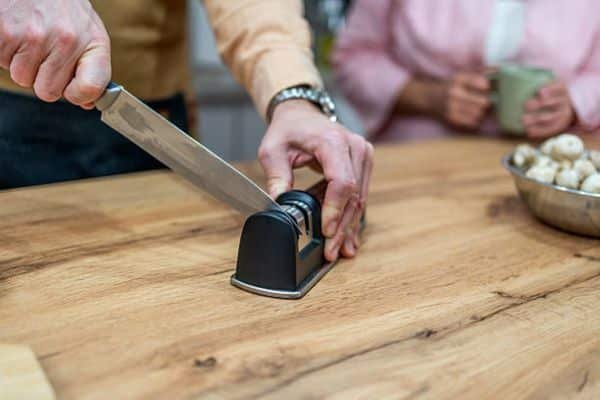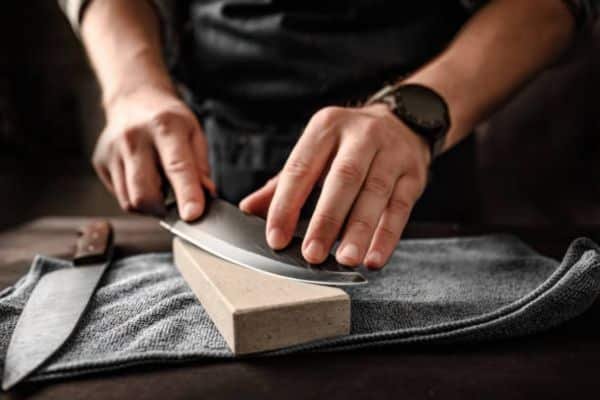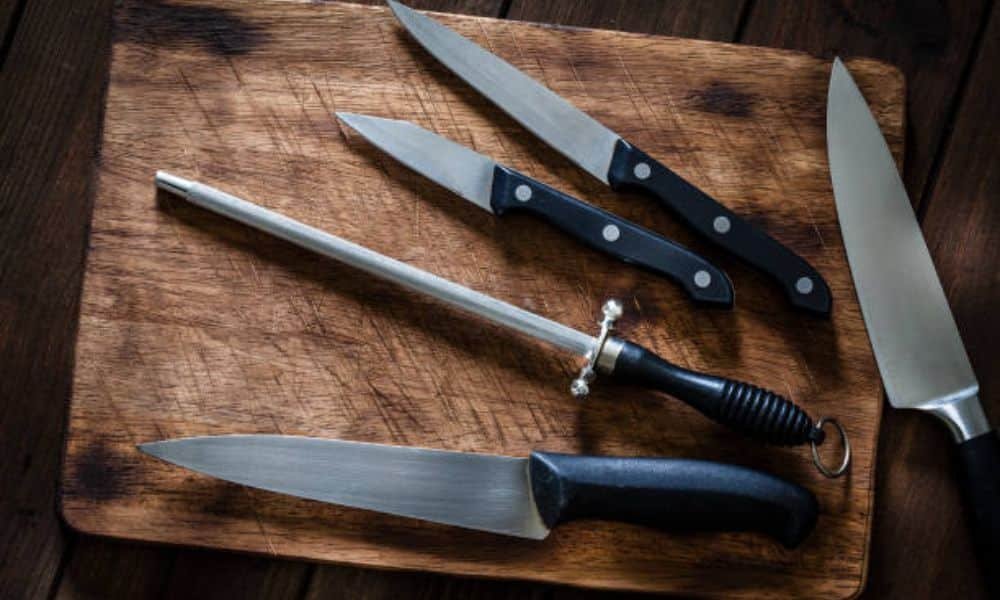I used to think dull knives Were just part of cooking. It wasn’t until I struggled with cutting through vegetables that I realized how much better A sharp knife is. It felt like A chore. Once I learned how to keep kitchen knives sharp, Everything changed. Cooking became quicker, Easier, and safer.
A sharp knife makes A huge difference. It’s easier to cut and safer To use. You don’t have To work as hard, and you can make clean, precise cuts. In this article, I’ll show you how to keep kitchen knives sharp so you can enjoy A smoother, Safer cooking experience every time.
What does it mean for a knife to be sharp?
A sharp knife has A fine edge that cuts smoothly through food. It slices with little effort, Making the job quicker. You can cut easily without forcing the blade through ingredients. A sharp knife is effective and efficient.
Why is sharpness important for precision and safety?
Sharp knives help you make clean, Precise cuts. They reduce the risk of accidents. When you use less force, You have more control over the knife. This makes cooking safer And more enjoyable.
Signs your knives need sharpening
You’ll notice when a knife needs sharpening:
- Difficulty cutting: It drags instead Of slicing through food.
- Uneven cuts: The blade tears Or crushes the food instead Of cutting cleanly.
- More pressure needed: You find yourself pushing harder to get through ingredients.
A Step-by-Step Guide
01. Regular Honing (Sharpening knives with a steel)

Honing realigns the knife’s edge, keeping it sharp. It doesn’t remove metal but helps straighten the edge. This is crucial for maintaining sharpness during regular use.
How to hone a knife using a honing steel:
- Hold the honing steel vertically in one hand.
- Place the knife At a 20-degree angle against the steel.
- Slide the blade from heel To tip, Moving along the steel.
- Repeat 5-10 times On each side.
02. Sharpening with a Stone or Sharpening System

Sharpening stones grind away a small amount of metal to reshape the blade. They are used for dull knives and are more intense than honing. If you’re looking for an affordable yet high-quality set of knives, check out our guide on the Best Kitchen Knife Set Under 100 to enhance your kitchen tools and sharpening experience.
How to use a sharpening stone:
- Soak the stone in water For about 10 minutes.
- Place it on a flat surface.
- Hold the knife At a 20-degree angle.
- Slide the blade along the stone from base to tip.
- Repeat 5-10 times On each side.
When to Use an Electric Sharpener

When is an electric sharpener useful?
Electric sharpeners are quick And easy to use. They are great for beginners or anyone needing a fast solution.
Pros and cons of electric sharpeners:
Pros:
- Quick and convenient.
- Easy for beginners.
- Provides consistent results.
Cons:
- Removes more metal than necessary.
- Less control over the process.
Chef Knife Sharp: Tips for Specific Knives
Your chef’s knife is your single most important tool in the kitchen. It’s employed for making any number of things: chopping, slicing, dicing. Keeping it sharp is the key for easy and efficient cutting. It takes less effort to use, cuts cleaner, and is safer. A blunt can make your kitchen work slow and annoying.
How to keep your chef’s knife sharp:
- Hone it regularly with a honing steel.
- Sharpen it with A stone or electric sharpener when it feels dull.
- Clean and dry right after use To avoid corrosion.
- Store it in a block or on A magnetic strip to protect the blade.
How Often Should You Sharpen Your Knives?

It depends on how much you use them. For daily use, sharpen every 3 to 6 months. For occasional use, once or twice a year should be enough. Honing regularly can help you stay sharp longer.
Factors that impact frequency:
- Type of cutting: Cutting tough foods like bones or frozen items dulls the blade faster.
- Material of the knife: Stainless steel holds its edge longer, but still needs sharpening.
The Right Tools for Maintenance:
You need the right tools:
- Honing steel: Helps realign the edge between sharpenings.
Sharpening stone: Use this for dull knives. - Electric sharpener: Good for quick, easy sharpening.
Storing and Caring for Your Knives

Storing properly is crucial. A knife block, magnetic strip or drawer insert can all do the trick. These techniques will ensure you don’t damage the edge of the blade from simply pulling in and out of a wooden block and sort your knives in style. Don’t toss them in a drawer where they might bang against other utensils.
Improper storage can lead To dull edges. Knives left loose in A drawer may get scratched or nicked. Storing knives in a block or on a magnetic strip keeps the blade safe and helps maintain sharpness. Proper storage reduces the need For frequent sharpening.
Conclusion
Sharp knives are one of the keys to making cooking easier, safer and more enjoyable. A sharp knife will allow you to cut with precision, minimize the risk of cuts, and will expedite your cooking time. Maintaining your knives just takes a little effort.
Do the easy work now — hone them frequently, sharpen when necessary, and store them carefully. These measures will help it stay sharp and perform for every meal.

